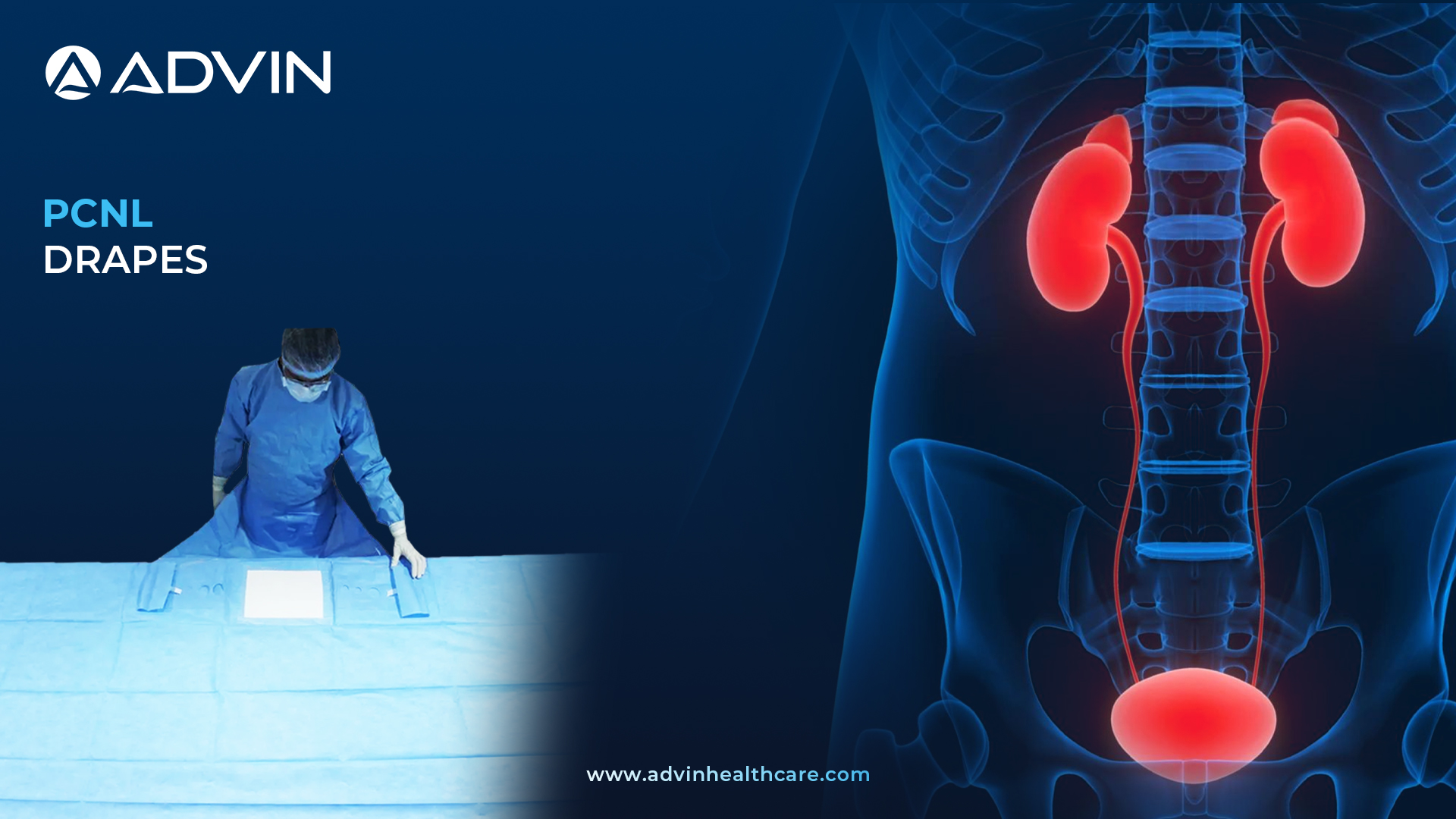Introduction to PCNL Drape – Sterile Protection for Percutaneous Nephrolithotomy
A PCNL Drape is a sterile, disposable drape specifically designed for Percutaneous Nephrolithotomy (PCNL) surgeries. It provides a protective covering and sterile barrier during the procedure, ensuring patient safety and infection control. The drape includes a fluid collection pouch, adhesive area, and fenestration opening that allow easy access to the surgical site while maintaining sterility.
Development & Evolution – Advancements in Urology-Specific Surgical Drapes
The introduction of specialized surgical drapes like the PCNL Drape improved surgical safety by minimizing the risk of contamination during urology procedures. Earlier, general-purpose drapes were used, but they lacked proper fenestrations and fluid management. With advancements, procedure-specific drapes were developed, offering better ergonomics, fluid handling, and overall infection prevention in PCNL surgeries.
Brief Overview – Importance of PCNL Drape in Infection Prevention & Fluid Management
The PCNL Drape is a high-quality sterile drape designed for Percutaneous Nephrolithotomy procedures. Advin Health Care manufactures PCNL Drapes with features like a transparent adhesive area, absorbent surface, and fluid collection pouch for optimal performance. This drape ensures complete protection, easy application, and enhanced infection control during surgery. It is widely used in hospitals and urology centers worldwide.
Clinical Applications – Used in PCNL, Nephroscopy, and Other Renal Surgeries
- Percutaneous Nephrolithotomy (PCNL)
- Nephrostomy procedures
- Kidney stone removal surgeries
- Urology minimally invasive procedures
How to Use – Step-by-Step Guidelines for Proper Draping in Urological Procedures
- Open the sterile pack in aseptic conditions.
- Position the drape over the patient, aligning the fenestration with the surgical site.
- Ensure the adhesive area sticks firmly to maintain a sterile seal.
- Utilize the fluid collection pouch to manage surgical fluids.
- Dispose of the drape safely after surgery.
Clinical Benefits – Enhanced Sterility, Fluid Control, and Easy Application
- Maintains sterile environment during PCNL
- Integrated fluid collection pouch reduces spillage
- Adhesive edges ensure secure placement
- Transparent material allows better visibility
- Reduces infection risks and surgical site contamination
Also Known As – Percutaneous Nephrolithotomy Drape, Urology Surgical Drape
PCNL Surgical Drape, Percutaneous Nephrolithotomy Drape, Kidney Stone Surgery Drape, Urology Sterile Drape, Fluid Collection Surgical Drape
Advin PCNL Drape – Material, Size Options & Key Product Features
- Advin Health Care offers a high-quality PCNL Drape designed for maximum patient safety and surgeon convenience. Manufactured with sterile, absorbent, and fluid-resistant materials, our drapes provide effective infection control and superior surgical outcomes in PCNL procedures.
- The PCNL Drape is a specially designed sterile drape used during Percutaneous Nephrolithotomy (PCNL) procedures to maintain a sterile surgical field. It is made from high-quality, fluid-resistant, and durable material that ensures maximum protection against infection and contamination.
- These drapes are manufactured with precision to provide ease of use for surgeons and comfort for patients. They are designed to effectively channel fluids away from the surgical site while offering clear visibility and accessibility.
Advanced Features
- Sterile, single-use disposable drape
- High-quality fluid-resistant medical material
- Strong adhesive edges to prevent displacement
- Provides a complete barrier to maintain aseptic conditions
- Transparent surgical area for enhanced visualization
- Pre-cut fenestrations for easy placement and secure fit
- Designed specifically for PCNL procedures
Get Connected:
+91-70717 27261 | urology@advinhealthcare.com | www.advinhealthcare.com



